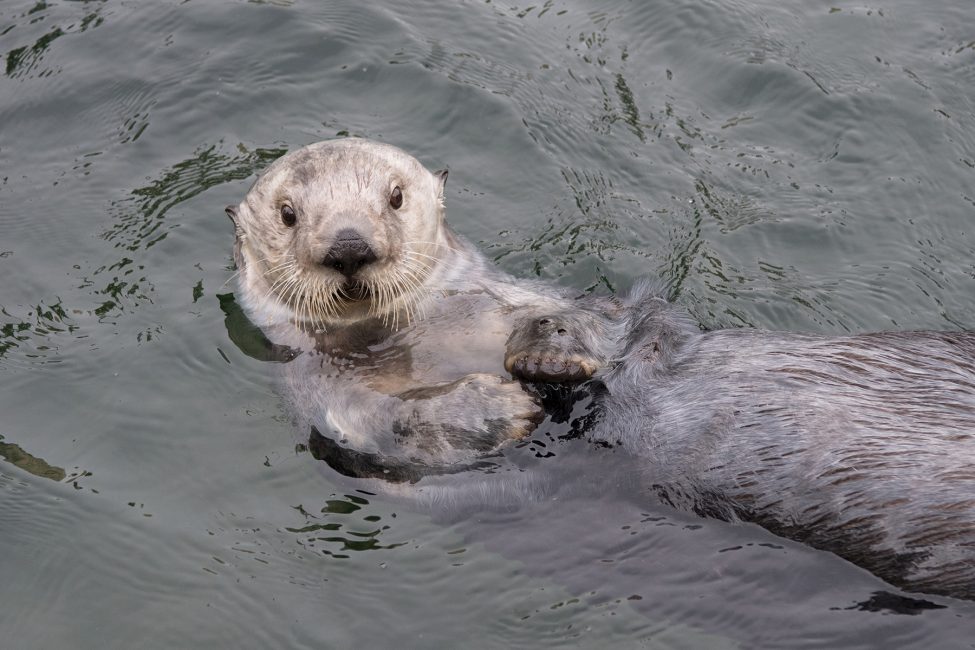
August 19, 2021
Saving Sea Otters
- as seen by -
 Julie Larsen and Coastal Ecosystem Learning Centers (CELC) Youth Summit Participants
Julie Larsen and Coastal Ecosystem Learning Centers (CELC) Youth Summit Participants
Sea otters (Enhydra lutris), are listed as Endangered by the IUCN Red List of Threatened Species. It is a tough label to bear as these smallest of the marine mammals are a keystone species in their coastal marine ecosystem. Their presence, or lack of it, has a greater effect than other species on the balance of nature in the kelp forests where they make their home. Otters prey on sea urchins that can destroy kelp by overgrazing if the urchins become too abundant. Kelp forests thrive where sea otters are present to keep urchin populations in check.
And a side effect of environmental change has been increased stranding of sea otter pups that are separated from their mothers prematurely.
“Pups are unable to survive without their mothers because they do not hunt or groom on their own until they are six to nine months old,” says Payden Sra, WCS’s New York Aquarium Senior Wild Animal Keeper. “Currently, their mothers have to go further out to sea because of habitat loss and depleted food sources, and, for this reason, are a bigger target for sharks. Zoos and aquariums don’t breed otters because of the high number of rescues that need a home every year. (Quint, above, was found abandoned on the west coast and came to the New York Aquarium through the Monterey Bay Aquarium rescue program in 2012).”
Inter-aquarium relationships have led to other animal rescues and placements.
Chicago’s Shedd Aquarium welcomed two orphaned sea otter pups taken in by Monterey Bay Aquarium in 2019. Like the New York Aquarium’s otters, they were deemed non-releasable by US Fish and Wildlife Service as they were unable to care for themselves at their young age.
“In an act of conservation, aquariums have come together to preserve the species,” says Anne, a teen volunteer at Shedd Aquarium and a CELC Youth Summit participant.
Monterey Bay Aquarium has a long-running rescue, rehabilitation, and release program for sea otter conservation and ecosystem restoration.
“Sea otter surrogate mothers at Monterey Bay Aquarium are helping with the pup rescue,” notes Logan, a teen volunteer at Monterey Bay Aquarium and a CELC Youth Summit participant.
Some of these surrogate-reared pups have been released and are helping to restore the estuary ecosystem.
EDITOR’S NOTE: The Coastal Ecosystem Learning Centers (CELC) network is a consortium of 25 aquariums and marine science education centers located in the United States, Canada, and Mexico and part of the National Oceanic and Atmospheric Administration (NOAA)/US Department of Commerce. Recently, a group of high school students from some of the aquarium partners in the CELC network participated in a virtual youth summit gaining knowledge and skills from experts in ocean and environmental fields. This is a collaborative post made at a workshop during the summit which was held in collaboration with the North American Association for Environmental Education through the eeBLUE partnership.
Nikon D5




Leave a Comment
Christine
August 20, 2021 at 3:12 pm
Great work by the aquariums!